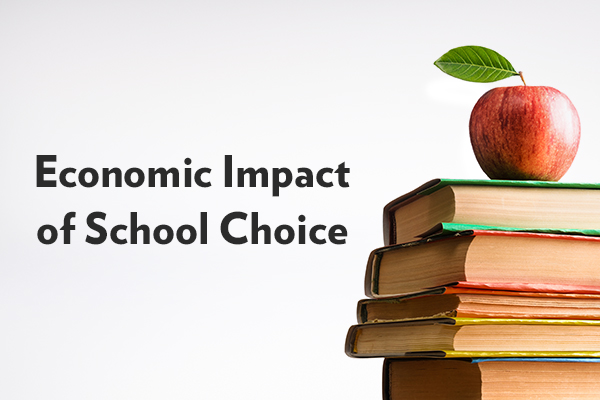Media

School to Prison Pipeline? Here’s the Escape Valve
Anthony Samuels is “the only male in my family that doesn’t have a record.” Rather, Anthony is a college graduate and a business owner. At an age when many youth head down the wrong path, Anthony was able to break the cycle of crime. He credits his success to the quality education he received at Abington Friends School on a tax credit scholarship.
Sadly, many don’t have the same chance Anthony did. 4.6 million at-risk American youth—ages 16 to 24—are neither working nor in school. This group of young people is particularly susceptible to exploitation, abuse, and incarceration. Without a change in their life trajectories, the cost to society could total $6.3 trillion.”
Here in Pennsylvania, the rate of disconnected youth—neither working nor in school—is nearly 11 percent, or roughly 162,000 young people. This group is more likely to end up on public assistance or in prison due to criminal activity. Meanwhile, the Pa. prison population is already over 47,000 at an average cost of $45,288 per inmate. Though this number is still too high, there has been movement in the right direction. Thanks to the Justice Reinvestment Initiative in 2012, incarceration rates and crime are on the decline.
How can we keep people out of prison and thriving in their communities?
Criminal justice reform and education reform are two sides of the same coin. Students who don’t receive a high-quality education are more likely to become incarcerated, and children of incarcerated parents are less likely to attain a high-quality education. Both reforms can and must be pursued at the same time.
Studies on the impact of educational opportunity on crime are showing that education choice can reduce criminal activity and incarceration. North Carolina students who entered a charter school in 9th grade were convicted of 36 percent fewer felonies and 38 percent fewer misdemeanors as adults compared to their peers who attended local district schools. And studies on private school choice in Milwaukee found that choice students were “significantly less likely to commit crimes than their carefully matched peers in traditional public schools by the time they reached 22 to 28 years of age.”
In fact, all six studies on the topic conclude that education choice reduces crime.
Pennsylvania leadership has taken positive steps. Tax credit scholarship expansions over the past two years can provide life-changing opportunities for thousands of Pennsylvania children. But for youth seeking opportunity and adults seeking independence, there’s still work to be done.
The General Assembly has shown that bipartisan cooperation for reform is possible. In the Senate, Anthony Williams (D) and Camera Bartolotta (R) have partnered on probation reform, as have Reps. Jordan Harris (D) and Sheryl Delozier (R) in the House. Educational freedom should likewise be a bipartisan issue.
Rep. Harris defended himself on Twitter last week for working across the aisle on criminal justice reform. “Let me be clear on something….I will go anywhere….and speak to anyone…that is willing to listen to the pain and plight of my community and is willing to work with me on it….where we agree we work together and where we disagree we fight like hell.” Similarly, when recently asked why he’d partnered with people of differing ideologies—such as Van Jones and George Soros—on criminal justice reform, Charles Koch replied, “All we need is shared vision on a specific issue.”
When it comes to children trapped in a cycle of poverty and crime, the shared vision is easy. Every child deserves the chance to thrive and grow in the best educational environment, regardless of their income or zip code.